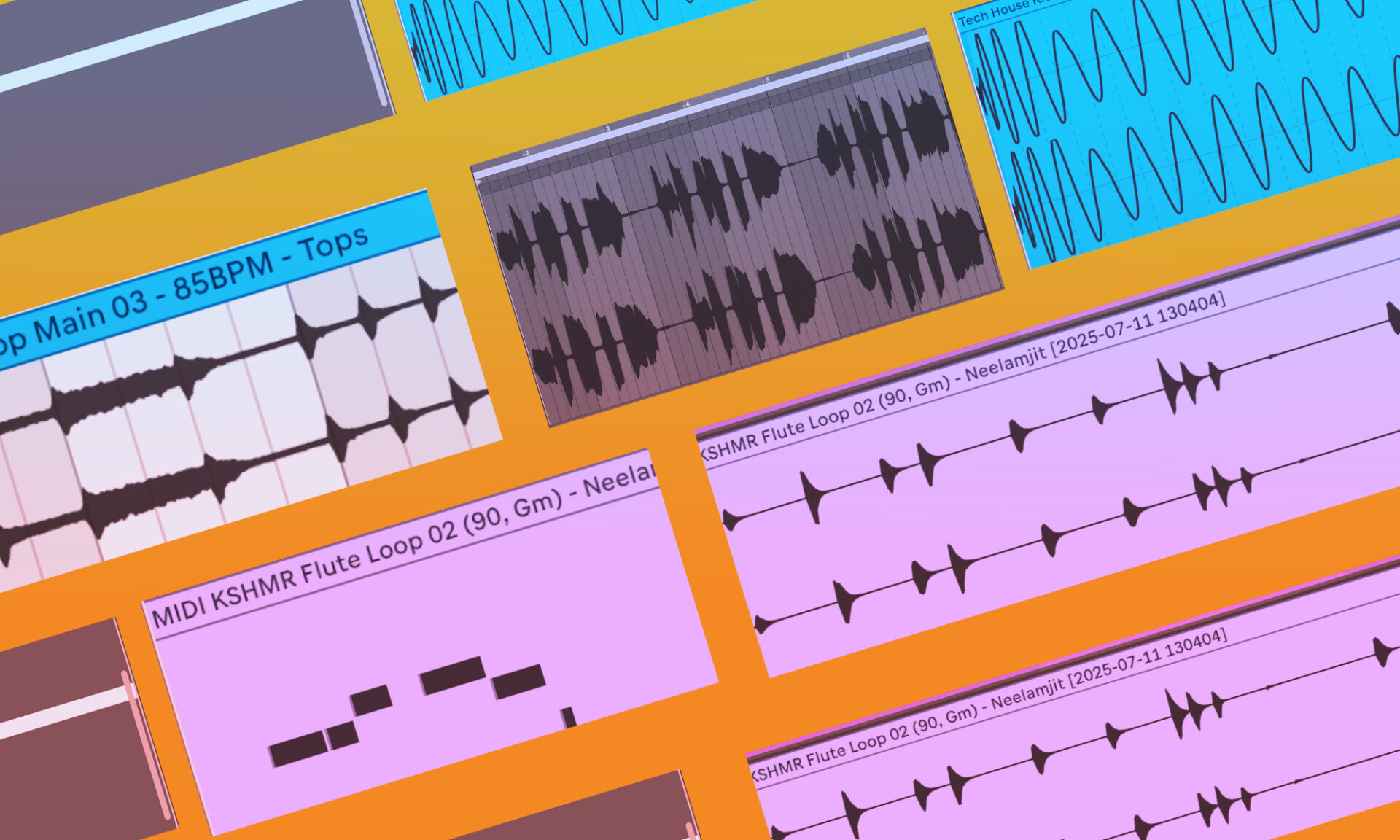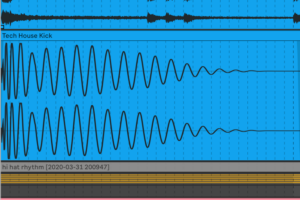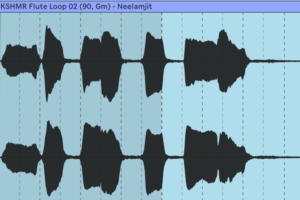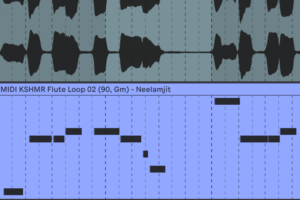Finding Inspiration from Existing Samples

- Pull ideas from unexpected places — jazz fills, world instruments, or textures from other genres — to break out of predictable patterns.
- Use Ableton’s “Convert to MIDI” to reshape loops and phrases into fresh ideas you wouldn’t have played by hand.
- Flip the role of a sample by treating tonal loops as rhythmic elements, or percussive hits as melodies, to create new grooves.’
- Get more out of what you already have by resampling, filtering, and reshaping existing layers instead of constantly adding new ones.
- Treat every sample as raw material, focusing on how you can shape it rather than relying on its original form.
A lot of tracks stall out because they hinge on finding the right sound, as if it’s going to arrive fully formed. The ideas that actually move a track forward come from working with what’s already in the session and reshaping it, extracting its character, finding new ways to make it fit.
This article is about that process.
It’s about treating every sample, every loop, every phrase as raw material. The point is to use what you have, make it work harder, and land on ideas you wouldn’t have found any other way and pull off that singular goal all producers strive to get: “less is more.”
Pull From Off-Genre Packs

Most genre-specific sample packs do a good job of capturing a particular sound. Genre packs provide the archetypal kicks, snares, and textures that define deep house, drum and bass, or other genres. In many ways, these packs cover 70% of the ground for making a track that fits the style. The downside is that, for the same reason, they tend to sound like textbooks: functional and polished, but rarely distinctive.
The result is a lot of tracks that hit the mark sonically but don’t stand out creatively just because so many other, say, tech house producers are dropping cookie cutter tech house kicks into their tracks and calling it a day.

One of the easiest ways to break out of that box is to borrow from other worlds. A jazz snare fill might be exactly what your deep house track needs for a moment of character. A flamenco guitar line can open a progressive breakdown. A hand‑struck drum or a wood flute can instantly shift the feel of a groove in a commercial club record in hopes of drawing from a wider pool and filtering those textures through your lens.
We’re all a culmination of the sounds we’ve internalized, and pulling ideas from unexpected places is one of the quickest ways to land on a sound that’s truly your own. Sound packs like KSHMR Vol. 4, with strings, flutes, traditional percussion, and vocal phrases, are ideal for this kind of exploration

Convert to MIDI for Unexpected Results
Ableton’s “Convert to MIDI” feature is an overlooked way to generate ideas that don’t feel like anything you would’ve played from scratch. Drag in a sample like a guitar phrase, a vocal loop, a full musical bed, and let Ableton do its thing. It will often over‑interpret the audio, producing more notes than the source contains, but that’s where the creative work starts. You can sculpt that raw MIDI down, remove the awkward or dissonant pitches, and land on a progression or motif that feels uniquely yours, like a sculptor taking a chainsaw to a block of gnarly granite.
The beauty of this approach is that it works across genres.

Try extracting the MIDI from a flamenco guitar line and applying it to a trance lead, or borrow the rhythm of a jazz horn riff for a moombahton drop. The goal is to give yourself a starting point you wouldn’t have arrived at otherwise, then decide if it’s worth turning into a full track. You can even layer the original sample back in as ear candy, using the techniques we outlined in this article, to add character and tie the new ideas back to their source.
It’s a quick way to break habits and open up directions you might never have considered.

Flip the Function of a Sample
One of the best ways to shake a track out of its routine is to set a constraint: take a tonal loop and treat it like a percussive one, or vice versa.
Ableton makes this easy too.

Its Transient Warp mode can reduce a sample down to its attacks, letting you pull a rhythm out of almost any recording. You can chop a guitar or flute loop down to its transient clicks, then use that as a starting point for a drum groove. Or use the “Convert to New Drum Track” feature on a sharp, plucky sample and build a whole beat from its rhythmic DNA.’

The point is to let each move guide the next, instead of throwing a hundred ideas at the wall and hoping one sticks. The dry loops in KSHMR Vol. 4 are ideal for this approach as they’re designed to hold up when reshaped, making it easy to turn a single sound into a swing, a fill, or a completely new groove. It’s an approach that doesn’t just save time, it leads to ideas you wouldn’t have found otherwise.

Get More From What’s Already in the Project
A lot of the best ideas happen when you stop reaching for new sounds and start working with what’s already in the session. Instead of scrolling endlessly for another sample, try bouncing down a layer and reshaping it.
Chop it, stretch it, run it through a delay and a filter, and suddenly that sound is doing a new job a fill, an atmosphere, a riser that connects sections. A single vocal phrase from KSHMR Vol. 4 can turn into a background effect that feels like it was meant for the track from the start.
This approach is about restraint, and it can be more rewarding than another deep dive into a sample pack. By finding new roles for the elements you already have, you’re making sure every sound is working harder for you. It’s an easy way to get more out of less, and it often leads to moments you wouldn’t have found any other way.
Final Thoughts
All of these ideas come down to the same thing, making deliberate decisions about the sounds you use and the role they play. It’s tempting to treat sample packs as finished ideas, to lean on their polish and drop them in as‑is. However, the best tracks come about when you refine those ideas, twist their context, and make them your own.
KSHMR Vol. 4 gives you the raw material to do precisely that: character‑rich textures, live phrases, and percussive moments that can be reshaped, reshuffled, and pulled apart until they fit your track. The point is to approach every sound with intention.
Treat it as a piece you can manipulate, a starting point you can build from, and an opportunity to land somewhere new. It’s not about finding the right sample. It’s about doing the right thing with it.
